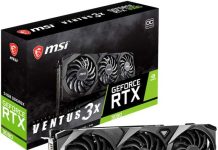In recent years, the world of cryptocurrency has exploded in popularity, offering a unique opportunity for individuals to earn money from the comfort of their homes. One of the most intriguing ways to participate in this digital economy is through cryptocurrency mining. In this guide, I will walk you through the entire process of mining your own crypto, providing you with essential steps, tips, and resources to get started.
What is Cryptocurrency Mining?
Before diving into the steps, let’s briefly discuss what cryptocurrency mining is. In simple terms, mining is the process of validating transactions on a blockchain network and adding them to the public ledger. Miners use powerful computers to solve complex mathematical problems, and in return, they are rewarded with cryptocurrency. This process helps to secure the network and maintain its integrity.
Why Mine Crypto at Home?
Mining crypto at home offers several benefits, including:
- Flexibility: You can set your own hours and work at your own pace.
- Control: You have full control over your equipment and mining operation.
- Potential Profit: With the right setup and strategy, mining can be a profitable endeavor.
Step 1: Choose Your Cryptocurrency
The first step in your mining journey is deciding which cryptocurrency you want to mine. While Bitcoin is the most well-known, it’s also one of the most competitive and requires significant investment in hardware. Other cryptocurrencies, such as Ethereum, Litecoin, and Monero, may offer better opportunities for home miners.
Recommended Cryptocurrencies for Mining
- Ethereum (ETH): Known for its smart contracts, Ethereum can be mined using GPUs.
- Litecoin (LTC): Often referred to as the “silver to Bitcoin’s gold,” Litecoin is easier to mine.
- Monero (XMR): Focused on privacy, Monero can be mined with standard CPUs.
Step 2: Get the Right Hardware
Once you’ve selected a cryptocurrency to mine, the next step is to acquire the necessary hardware. There are two primary types of mining rigs: ASIC miners and GPU miners.
ASIC Miners
Application-Specific Integrated Circuits (ASICs) are specialized devices designed for mining specific cryptocurrencies. They are powerful and efficient but can be expensive.
Pros:
- High efficiency and speed.
- Lower power consumption.
Cons:
- Limited to mining specific coins.
- Higher initial investment.
GPU Miners
Graphics Processing Units (GPUs) are versatile and can mine a variety of cryptocurrencies. They are often used for mining Ethereum and other altcoins.
Pros:
- Flexible for mining different coins.
- Easier to upgrade and resell.
Cons:
- Generally less efficient than ASIC miners.
- Can be more expensive to operate.
Step 3: Set Up Your Mining Rig
After obtaining your hardware, it’s time to set up your mining rig. Here’s how I did it step-by-step:
- Choose a Location: Find a cool, well-ventilated space to set up your mining rig. Mining generates a lot of heat, so good airflow is crucial.
- Assemble Your Hardware: If you’re using a GPU miner, connect your graphics cards to the motherboard and ensure all components are securely in place.
- Install Software: Download and install mining software compatible with your chosen cryptocurrency. Popular options include:
- CGMiner: Ideal for both ASIC and GPU miners.
- NiceHash: A user-friendly option for beginners.
- Ethminer: Specifically designed for Ethereum mining.
- Join a Mining Pool: Mining solo can be challenging, especially for beginners. Joining a mining pool lets you combine resources with other miners, increasing your chances of earning rewards. Some popular mining pools include:
- Slush Pool: One of the oldest and most reputable pools.
- F2Pool: Supports a wide variety of cryptocurrencies.
- Ethermine: Specifically for Ethereum mining.
Step 4: Configure Your Mining Software
Once your rig is set up, you need to configure your mining software. Here’s a general process to follow:
- Create a Wallet: Before you start mining, set up a cryptocurrency wallet to store your earnings. Options include:
- Hardware Wallets: Such as Ledger or Trezor for added security.
- Software Wallets: Like Exodus or Atomic Wallet for easy access.
- Input Pool Information: In your mining software, input the details of your chosen mining pool, including the pool address and your wallet address.
- Adjust Settings: Depending on your hardware, you may want to tweak settings for optimal performance. For instance, adjusting the clock speeds and power limits can enhance efficiency.
Step 5: Start Mining
With everything configured, it’s time to start mining! Launch your mining software and monitor its performance. You’ll want to keep an eye on the following metrics:
- Hash Rate: The speed at which your mining rig is solving problems.
- Temperature: Ensure your hardware doesn’t overheat.
- Power Consumption: Keep track of energy costs to evaluate profitability.
Step 6: Monitor and Optimize Your Setup
Mining isn’t a set-it-and-forget-it process. Regularly monitor your rig’s performance and make adjustments as necessary. Here are some tips for optimization:
- Overclocking: If you’re comfortable with it, overclocking your GPU can increase hash rates, but be cautious of heat and power consumption.
- Regular Maintenance: Dust can accumulate quickly in mining rigs; clean them regularly to maintain efficiency.
- Stay Informed: The cryptocurrency market is volatile. Stay updated on market trends and adjust your mining strategy accordingly.
Step 7: Understand the Costs and Profits
Mining can be a profitable venture, but it comes with costs. Here’s a breakdown:
Costs
- Hardware: Initial investment in mining rigs can be substantial.
- Electricity: Mining consumes a lot of power; calculate your electricity costs to determine profitability.
- Maintenance: Occasionally, components may need to be replaced or upgraded.
Potential Profits
To estimate potential profits, consider using online mining calculators. These tools can help you assess your expected earnings based on your hardware, electricity costs, and the current market value of the cryptocurrency you’re mining.
Step 8: Stay Informed and Adapt
The world of cryptocurrency is constantly evolving. Stay informed about new developments, technologies, and regulations that could impact your mining operation. Engage with online communities, forums, and social media groups to exchange knowledge and experiences with other miners.
Conclusion
Mining cryptocurrency from home can be a rewarding venture, both intellectually and financially. By following this step-by-step guide, I hope you feel equipped to embark on your mining journey. Remember that success in cryptocurrency mining requires ongoing learning, flexibility, and adaptation to market changes. Whether you’re looking to earn passive income or dive deeper into the world of blockchain technology, mining could be the perfect opportunity for you.





.jpg?w=100&resize=100,70&ssl=1)
